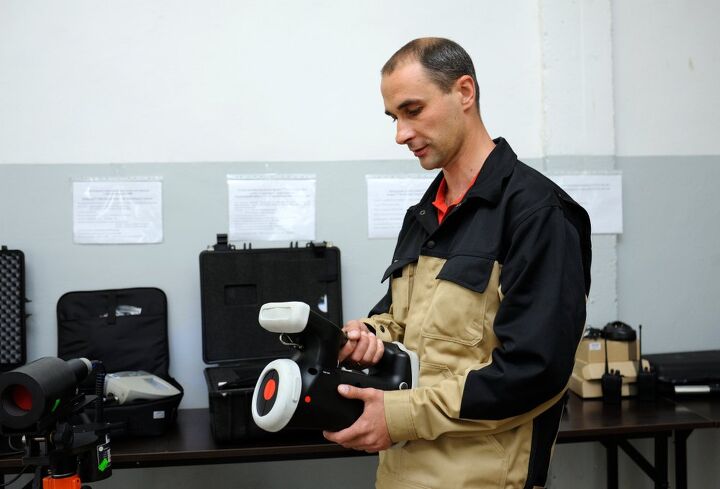How To Pass A Radon Test (Do These 3 Things!)

Radon is a dangerous (in fact, deadly) silent gas that is undetectable to humans. Because it can cause cancer in people, building codes require homeowners to be able to pass a radon test in order to continue living in their houses. The thing is, radon tests can pick up even trace amounts of this gas. So, how can you make sure you’ll pass the test?
There are several methods that you can use to help pass a radon test. These include:
- Adding Ventilation
- Improving Floor Breathability
- Treating Existing Radon Problems
Radon tests can make or break your ability to live in your home. Moreover, being unable to pass a radon test suggests that you may have bigger (and deadlier) problems on your hands than what you initially thought. Here’s what you need to know…
Need Radon Gas Testing Services?
Get free, zero-commitment quotes from pro contractors near you.

How To Pass a Radon Gas Test
Radon gas is dangerous and can even be deadly. You must pass a radon test to know that your home is safe and that you don’t need to worry about the air you’re breathing. Radon exists in low levels in most homes, but high levels are dangerous and will cause you to fail a test.
Luckily, there are several ways that you can keep radon gas levels in your home safe. Each of these methods works to prevent radon from getting trapped and reaching dangerous levels. Let’s take a look at the easiest and most effective ways to pass a Radon gas test.
Add More Vents
The easiest way to avoid radon trapping itself in your home is to bolster your home’s ventilation. Better airflow means that you have a better chance of having radon leave your home. Add vents in your home to improve the airflow and let radon gas dissipate.
Open Windows
Open your windows so that radon can escape your home. This is the most simple way to pass a radon test, and it works like a charm. However, opening the windows can be a temporary solution if you don’t make airflow improvements in your home.
Make sure that you implement improvements such as vents or fans eventually, even if you pass a test after opening the windows.
Use Fans
You can use ventilation fans to pass a radon gas test. Ventilation fans can help circulate the air and dissipate the radon so that it doesn’t clump up and get trapped in one space. You are likely to fail a radon gas test if you have stagnate air with a high concentration of radon.
Consider opening the window to improve the air circulation to be extra safe. You can even reduce radon by simply running ceiling fans and bathroom fans.
Make Your Floor More Breathable
Breathable floors sound a little extra, but there’s science to this step. Radon seeps up through the floor, which means that adding breathability and working with your floor’s materials can help reduce radon. Here’s how you can do it:
- Add some strategic holes to improve breathability. This can often be done by specialists and will involve adding ventilation caps to your sump pump or through the drains in your floor. Do not attempt to do this on your own, as this option may not make much sense in some cases.
- Consider getting crawlspace encapsulation. If you have a crawlspace under your home, it could be that radon is seeping up through the crawlspace. Getting encapsulation done on your home can reduce the amount of radon that makes it to your home. Crawlspace encapsulation isn’t cheap, but it’s often well worth the money.
- Look at your home’s flooring. Certain types of flooring are more prone to radon issues than others. Replacing the flooring can help in some cases.
- Seal cracks in your foundation. Cracks in your foundation are where most of your home’s radon comes from. By sealing them up, you make it harder for radon to enter your house.
Treating Existing Radon Problems
Here’s the thing that most people already know about radon: there are services that are designed to remediate radon gas problems out there. Radon mitigation systems can reduce radon levels by as much as 50 percent, all while keeping it a relatively passive procedure. If you already know you have a radon problem, getting mitigation makes a lot of sense.
A good rule of thumb is that you should get radon remediation if you already failed a radon test once. In fact, many building codes might not allow you to get another radon test until you get this issue fixed.
Avoid Failing a Radon Test
Much like there are ways to improve your chances at passing a radon test, there are things you should not do if you want to pass it, too. For example, these things below can seriously drop your chances of passing that test:
- You kept all the windows and vents closed. Even if you don’t have much radon in your home, keeping your home poorly ventilated will make it appear like you do. While the standard is to keep your windows closed for 12 hours to get a full reading on the radon, if you want to skew the test in your favor, keeping your windows open is a smart move.
- You ignored failed tests from the past. This is just a bad idea all-around. Along with putting yourself at risk for lung cancer, ignoring bad test results means that you probably still have high radon levels in your home because you didn’t fix anything.
- You began to smoke in your house and haven’t let much air in to clear it. Radon, which is a by-product of radium, is one of many toxic compounds found in cigarette smoke. While it won’t totally skew your results, it can harm your readings to some extent.
How Much Radon Is Too Much?
It all depends on the state. However, the typical benchmark is 4.0 picocuries per liter. Anything above this could potentially increase your risk of lung cancer, and may also lead to your home to get condemned. To find out the maximum radon allowed in your area, refer to your local building codes.
Is It Possible To Cheat Radon Tests?
Technically, radon test fraud is a thing. This is the act of doing things that skew radon tests in your favor even though you know you should not be able to pass the test. Radon fraud can happen by getting a faux tester to perform the test, by adding temporary vents in your home, or by bribing people to pass you.
Of course, there are other methods that can be used to cheat a radon test. If you suspect serious radon levels in your home, don’t worry about passing the test. Rather, focus on finding out the truth about radon. It could save your life.
Does Radon Fraud Have Any Consequences?
Yes. Along with leaving a problem that could potentially kill someone out in the open, radon fraud can also have serious implications for home sellers who want to sell their home. If a buyer notices radon fraud or sees that radon levels are dangerously high, they have the right to reject the transaction until it’s remediated.
In some cases, fraudulently testing your radon can also get you in some legal trouble. This can include getting fined by your local housing board, having a potential buyer sue you, or if you have renters, a breach of contract. Though it is rare, in some cases, this can also lead to more serious issues, such as criminal charges relating to negligence.
How Dangerous Is Radon?
Radon is pretty dangerous. While it won’t cause instant death, the truth is that having radon in your home massively increases your likelihood of having lung cancer. Moreover, in homes where radon is particularly high, the chances of having other side effects can also increase.
A high radon level is a serious cause for concern, which is why most building codes require radon testing once in a while. It’s the leading cause of lung cancer among nonsmokers. If you find high radon levels at home, make sure to get to a doctor for a checkup. It can help you do damage control.
Need Radon Gas Testing Services?
Get free, zero-commitment quotes from pro contractors near you.

Related Questions
Where do you test for radon?
While it is occasionally possible to hear of a radon test that happens on higher levels of a home, the truth is most radon tests take place on low levels. This is because radon seeps up through the ground into your home. Since radon gas is somewhat heavy, it tends to linger in lower levels more than it would upper levels.With that said, radon can have drastically different levels throughout your home. Many major testing groups will have several testing areas just to ensure things are safe.
Is it possible to detect radon without a test or a radon detector?
There are reasons why tests and radon detectors are commonplace. Radon is a scentless, odorless gas. It doesn’t have any color nor does it appear like a mist or a “toxic green fog” in your home. Because of this, it’s a gas that’s classified as undetectable by human standards.You need to have a tech solution to this low-tech, high-risk problem. Don’t assume you live in a radon-free place without having a proper test done on your home.
Do you have to leave your house while it’s being tested for radon?
It’s common to hear people claim that they had to leave their homes while they test for radon. This may have been true in the past, but it’s not the case anymore. You can stay at home while testing is being performed. Just make sure that you close the windows and don’t let too much air inside.
Related Guide

Ossiana Tepfenhart is an expert writer, focusing on interior design and general home tips. Writing is her life, and it's what she does best. Her interests include art and real estate investments.
More by Ossiana Tepfenhart













![The 5 Best Angle Grinders – [2022 Reviews & Buyer's Guide]](https://cdn-fastly.upgradedhome.com/media/2023/07/31/9071326/the-5-best-angle-grinders-2022-reviews-buyer-s-guide.jpg?size=350x220)













